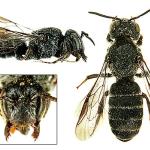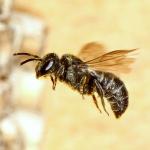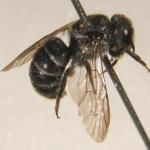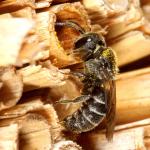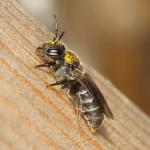Stelis pygmaea SCHENCK 1853; Heriades paxillorum CHEVRIER 1872
A relatively recent addition to the British bee list, the first specimen having been found in West Sussex in 1984.
The very few British records of this small bee are from a handful of sites in West Sussex (particularly the Midhurst and Emsworth areas) and two in Surrey. British records and observations are summarised by Else (1998). The bee may also occur in other localities in southern England which support its host species, the bee Heriades truncorum (this species was found in all the sites listed above).
Widely distributed in western Europe, from southern Finland south to Iberia, and east to Greece; also known from north Africa (Algeria and Egypt).
Stelis breviuscula is known from only five 10 km squares. It was listed as Endangered (RDB1) by Shirt (1987) and as Insufficiently Known (RDBK) by Falk (1991). Work for this Atlas suggests that this status might need to be reviewed.
This includes the edges of heathland, and areas close to a marsh and a river.
Univoltine; July to August.
In southern England the presumed host is the megachiline bee Heriades truncorum (the well-known host on the Continent (Westrich 1989)). This latter species nests in burrows in dead wood and pithy stems.
Fleabane (Pulicaria dysenterica), hawkweed (Hieracium sp.) and ragwort (Senecio jacobaea).
No information available. Author of profile: G R Else.
Profile written: 1998
Proofed: February 2012


